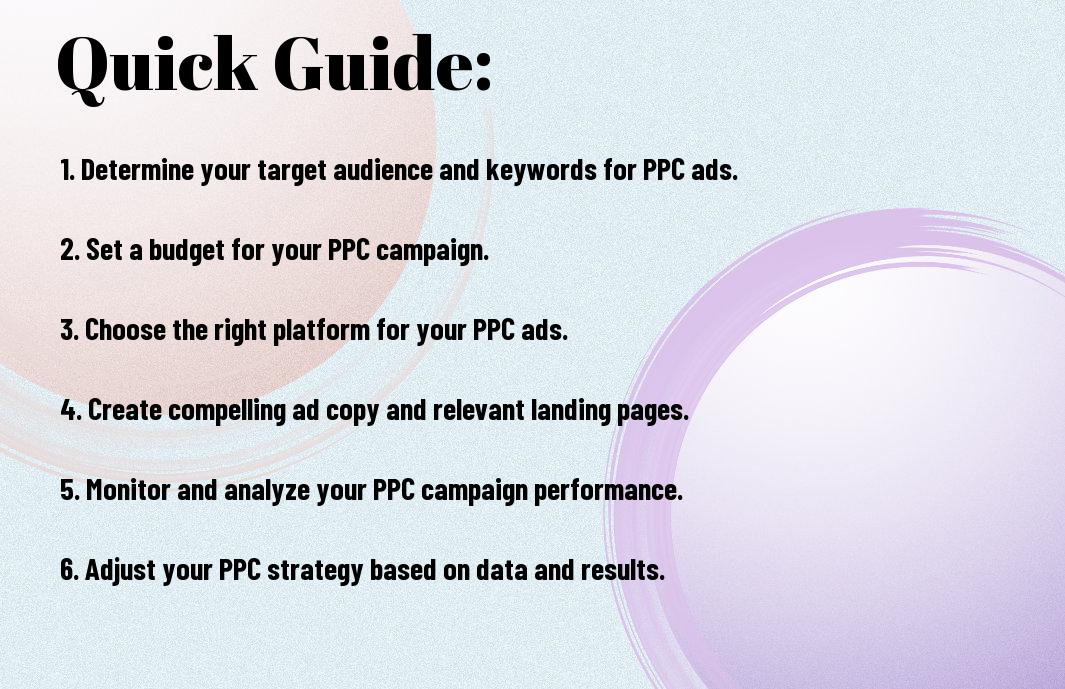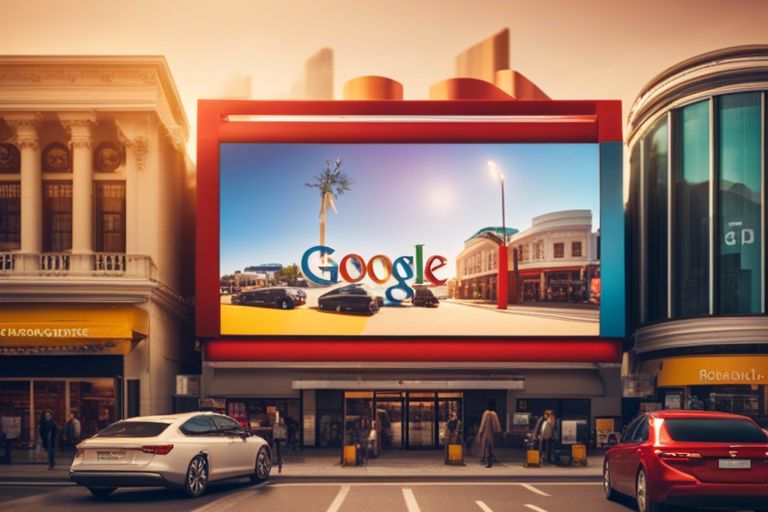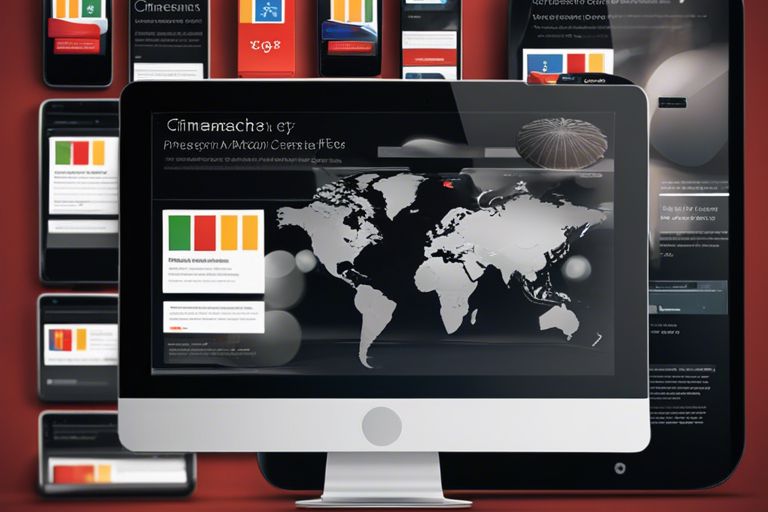Have you considered utilizing Pay Per Click (PPC) ads to boost your business’s online presence and drive traffic to your website? If not, you may be missing out on a powerful tool that has the potential to significantly increase your visibility and sales. In this guide, we will walk you through the ins and outs of PPC advertising and how you can effectively implement it for your business.
One of the most important benefits of PPC ads is the ability to reach a highly targeted audience. By selecting specific keywords and demographics, you can ensure that your ads are being shown to the right people at the right time. Additionally, PPC ads offer immediate visibility on search engines, allowing you to jump ahead of organic search results and get in front of potential customers right away.
However, it’s important to approach PPC ads with caution, as it can also be risky if not managed properly. With the potential to spend a significant amount of money without seeing a return on investment, it’s crucial to have a clear strategy and understanding of how PPC works. Throughout this guide, we will provide you with the knowledge and tools to navigate the world of PPC ads with confidence and success.

Table of Contents
ToggleTypes of Pay Per Click Ads
The world of Pay Per Click (PPC) advertising offers various types of ads that you can use to promote your business. Understanding the different formats can help you make informed decisions about the best ad strategy for your specific goals and target audience. Here are the main types of PPC ads:
| Search Engine PPC Ads | Social Media PPC Ads |
| Display Network PPC Ads | Other PPC Ad Formats |
Search Engine PPC Ads
When it comes to PPC, search engine ads are probably the first thing that comes to mind. These are the ads that appear at the top of search engine results pages, usually marked as “Ad” or “Sponsored.” You bid on specific keywords so that your ad appears when someone searches for those terms. The great thing about search engine PPC ads is that they offer targeted reach to people actively seeking what you offer. By using Google AdWords or Bing Ads, you can reach potential customers at the exact moment they are looking for your products or services.
Social Media PPC Ads
Social media PPC ads are designed to reach users on social platforms like Facebook, Instagram, Twitter, and LinkedIn. These ads are highly targeted based on demographic, geographic, and psychographic data, allowing you to reach a very specific audience. With social media PPC ads, you can also take advantage of features like retargeting to show your ads to people who have visited your website or interacted with your brand online.
Display Network PPC Ads
Display network PPC ads appear on websites that are part of the advertising network. These ads can include text, images, video, or rich media, and they are shown to users who are browsing websites related to your target audience. The display network allows for a broad reach and can help increase brand awareness, but it’s important to have a strong ad design and message to stand out among the competition.
Other PPC Ad Formats
There are also other PPC ad formats to consider, such as remarketing ads, shopping ads, and video ads. Remarketing ads target users who have previously visited your website, while shopping ads are specifically designed for e-commerce businesses to promote their products. Video ads, on the other hand, can be shown on various platforms and can be highly engaging for users. These additional ad formats can complement your overall PPC strategy and help you achieve different goals.
Step-by-Step Guide to Creating a PPC Campaign
Keep in mind that creating a successful PPC campaign requires careful planning and execution. Below is a step-by-step guide to help you create an effective PPC campaign for your business.
Defining Your Business Goals and Target Audience
Before you start creating your PPC campaign, it’s crucial to define your business goals and target audience. This will help you tailor your campaign to reach the right people and achieve your desired results. Consider what you want to achieve with your campaign, whether it’s to increase sales, generate leads, or drive traffic to your website. Additionally, understanding your target audience’s demographics, interests, and online behavior will help you create ad campaigns that resonate with them.
Keyword Research and Selection
Keyword research is a fundamental aspect of creating a successful PPC campaign. Identify relevant keywords that are likely to be used by your target audience when searching for products or services related to your business. Use tools such as Google Keyword Planner to find keywords with high search volume and low competition. Selecting the right keywords will ensure that your ads are shown to the right audience, increasing the chances of clicks and conversions.
Writing Compelling Ad Copy
The ad copy is what grabs the attention of potential customers and entices them to click on your ad. It’s essential to create compelling, concise, and relevant ad copy that highlights the benefits of your products or services. Use strong, action-oriented language and include a clear call-to-action to encourage users to take the desired action, whether it’s making a purchase or filling out a form.
Designing Effective Ad Creatives
Along with compelling ad copy, visually appealing ad creatives can significantly impact the performance of your PPC campaign. Use high-quality images and engaging visuals that align with your brand and message. The ad creatives should be attention-grabbing and relevant to the products or services you are promoting. Ensure that the ad creatives are consistent across all platforms and devices to maintain a cohesive brand experience.
Setting Up Campaign Structure
Properly structuring your PPC campaign is crucial for organizing and managing your ads effectively. Group your keywords into relevant ad groups and create targeted ad campaigns for specific products or services. This allows you to tailor your ad messaging to match the intent of the user’s search queries, increasing the relevance and performance of your ads.
Bidding Strategies and Budget Allocation
Effective bidding strategies and budget allocation are essential for maximizing the performance of your PPC campaign. Understand different bidding strategies, such as manual bidding, automated bidding, and bid adjustments, to optimize your campaign for maximum return on investment. Allocate your budget to the most profitable keywords and ad groups that drive the highest conversions, ensuring that your ad spend is utilized efficiently.
Landing Page Optimization
Landing pages play a crucial role in converting ad clicks into valuable actions, such as purchases or lead submissions. Optimize your landing pages for relevance, clarity, and persuasive messaging that matches your ad copy. A well-designed and user-friendly landing page can significantly improve the overall conversion rate of your PPC campaign.
Monitoring and Adjusting Your PPC Campaign
Once your PPC campaign is live, it’s essential to continuously monitor its performance and make adjustments accordingly. Track key metrics such as click-through rate, conversion rate, and cost per conversion to gauge the effectiveness of your campaign. Identify underperforming ads or keywords and refine your campaign to improve its overall performance. Regularly testing and optimizing your PPC campaign is crucial for long-term success.
Tips for Maximizing the Success of PPC Ads
Despite the potential benefits of PPC ads, it’s important to implement strategies that will maximize their success and ensure a strong return on investment. Here are some valuable tips to help you make the most of your PPC campaigns:
- Keyword Research: Conduct thorough research to identify the most relevant and high-performing keywords for your ads.
- Ad Copy Testing: Regularly test and optimize your ad copy to improve click-through rates and overall performance.
- Landing Page Optimization: Ensure that your landing pages are tailored to match the ad messaging and provide a clear and compelling call to action.
- Monitoring and Adjusting: Continuously monitor the performance of your ads and make necessary adjustments to improve their effectiveness.
After implementing these tips, you can expect to see a significant improvement in the success of your PPC ads, leading to increased visibility, traffic, and conversions for your business.
Using Ad Extensions to Enhance Visibility
Ad extensions are a powerful tool for enhancing the visibility and effectiveness of your PPC ads. By including additional information and links within your ad, you can provide more value to potential customers and improve click-through rates. Some common ad extensions include call extensions, location extensions, sitelink extensions, and more. By utilizing these extensions, you can make your ads more prominent and attractive to searchers, ultimately driving more qualified traffic to your website.
Negative Keyword Implementation to Avoid Irrelevant Clicks
Negative keywords are just as important as the right keywords in a PPC campaign. By implementing negative keywords, you can prevent your ad from showing up for irrelevant search queries, thus saving your budget and improving the overall performance of your campaign. Regularly reviewing and updating your list of negative keywords is essential to prevent wasting ad spend on irrelevant clicks.
Seasonal Adjustments and Timing Strategies
Seasonal adjustments and timing strategies are crucial for maximizing the success of PPC ads, especially for businesses with seasonal offerings or promotions. By adjusting bids, ad messaging, and targeting based on seasonal trends and consumer behavior, you can capitalize on peak times and drive more targeted traffic to your website. Additionally, utilizing ad scheduling to show your ads at specific times of the day when your target audience is most active can significantly improve your campaign’s performance.
Utilizing Geotargeting for Localized Campaigns
Geotargeting allows you to target your PPC ads to specific locations, making them more relevant to local audiences. This is particularly effective for businesses with physical locations or those serving specific geographic areas. By tailoring your ad copy and targeting to local preferences and needs, you can improve the relevance and effectiveness of your ads, ultimately driving more qualified leads and sales.
Advanced Audience Targeting Techniques
When it comes to PPC ads, advanced audience targeting techniques can greatly enhance the reach and impact of your campaigns. By utilizing features such as remarketing, custom audience targeting, and demographic targeting, you can ensure that your ads are reaching the right people at the right time. You can tailor your messaging and offers to specific audience segments, increasing the chances of engagement and conversion. Below are some advanced audience targeting techniques you can use in your PPC campaigns:
| Remarketing: | Show ads to people who have previously visited your website. |
| Custom Audience Targeting: | Create custom audience segments based on criteria such as demographics, behaviors, and interests. |
| Demographic Targeting: | Target ads based on specific demographic attributes such as age, gender, income, etc. |
By incorporating these advanced targeting techniques into your PPC campaigns, you can maximize the impact of your ads and improve your overall marketing ROI.

Factors Influencing PPC Ad Performance
To ensure PPC ad success, you need to consider various factors that can influence their performance. These include:
- Quality Score: This is a metric used by PPC advertising platforms to measure the relevance and quality of your ads, keywords, and landing pages. The higher your Quality Score, the better your ad position and lower your cost-per-click.
- Click-Through Rates (CTR): CTR is a measure of how often people click on your ad after seeing it. It is a crucial factor in determining the success of your PPC campaigns.
- Conversion Rates: These indicate the percentage of visitors who take the desired action, such as making a purchase or filling out a form, after clicking on your ad.
- Ad Relevance and Landing Page Experience: Ensuring that your ad copy and landing page are highly relevant to the user’s search query can significantly impact your ad performance.
Quality Score and Its Impact on Ad Position
The Quality Score is a key factor in determining the ad position and the cost-effectiveness of your PPC ads. It takes into account the relevance of your ad, expected click-through rate, and the quality of your landing page. A higher Quality Score can lead to lower costs and better ad positioning. Improving your Quality Score can lead to a significant increase in ad performance.
The Role of Click-Through Rates (CTR) in PPC Ads
Your ad’s CTR is a crucial metric that directly impacts the success of your PPC campaigns. A high CTR indicates that your ads are relevant and engaging to your target audience. Higher CTRs can lead to improved ad positions and lower costs, making it essential to continuously optimize your ad copy and targeting to maximize CTRs.
Conversion Rates: Measuring the Effectiveness of PPC Ads
Conversion rates are a measure of how successful your ads are in prompting the desired actions from your audience. Improving your conversion rates is essential in maximizing the ROI of your PPC campaigns. By continually optimizing your ad messaging, targeting, and landing pages, you can increase the likelihood of users converting after clicking on your ads.
Ad Relevance and Landing Page Experience
The relevance of your ad to the user’s search query and the overall experience on your landing page are critical factors in determining the success of your PPC ads. Ensuring that your ads are highly relevant to the user’s intent and that your landing pages provide a seamless and engaging experience is key to maximizing your ad performance. Continuously testing and refining your ad messaging and landing page experience can lead to significant improvements in your PPC campaigns.

Pros and Cons of Pay Per Click Advertising
After deciding to invest in pay per click advertising for your business, it’s important to consider both the advantages and disadvantages of this marketing strategy. Here, we’ll break down the pros and cons for you to weigh the benefits and potential drawbacks of PPC advertising.
Advantages of PPC Advertising
When it comes to the benefits of pay per click advertising, there are several advantages that make it an attractive option for businesses. Firstly, PPC ads offer immediate visibility and can quickly drive traffic to your website. This is especially beneficial if you’re looking to increase brand awareness or promote a specific product or service. Additionally, PPC allows you to target your ads to specific demographics, locations, and search terms, providing you with a high level of control over your marketing efforts. You also have the ability to track and measure the performance of your ads in real-time, allowing you to make adjustments to optimize your campaign for better results. Lastly, with PPC, you only pay when someone clicks on your ad, making it a cost-effective option for businesses of all sizes.
Disadvantages of PPC Advertising
While there are many advantages to PPC advertising, there are also some potential downsides to consider. One of the main disadvantages is the potential for high competition and bid prices, especially for popular keywords. This can make it difficult to achieve a high ad placement without investing a significant amount of money. Additionally, managing a PPC campaign can be time-consuming and requires ongoing monitoring and optimization to ensure that you’re getting the best results. Furthermore, there is a risk of click fraud, where malicious clicks on your ads could result in wasted ad spend. It’s also important to note that if not managed carefully, your PPC campaign could end up costing you more than the value it generates for your business.

Conclusion
Following this comprehensive guide to pay per click ads for your business, you should now have a thorough understanding of how this advertising method can be effectively used to drive targeted traffic and increase conversion rates. By carefully selecting the right keywords, creating compelling ad copy, and utilizing strategic bidding, you have the potential to see remarkable returns on your investment. It’s important to continuously monitor and optimize your campaign to ensure that you are getting the best results possible.
Implementing pay per click ads into your marketing strategy can be a powerful way to reach potential customers at the right moment and drive them to take action. With the ability to track and measure the effectiveness of your ads, you have the flexibility to make informed decisions and adjustments to improve performance. By staying attentive to relevant trends and best practices in pay per click advertising, you can stay ahead of the competition and maximize the impact of your advertising budget. You now have the knowledge and tools to take advantage of the many benefits that pay per click ads can offer your business.



